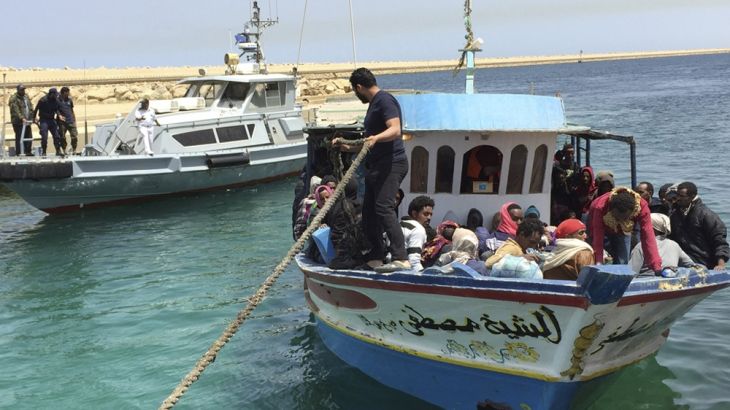
The deadly business of migrant smuggling
As thousands die on the perilous journey from Africa to Europe, we examine the economic cost of migrant trafficking.
Thousands have died on the perilous journey from Africa to Europe and with every boat that leaves Africa’s shores, the situation gets worse. The migrants, who want a better shot at life in Europe, are risking their lives because legal channels just are not open to them.
Their misery creates an illicit market for people smugglers – with millions in profits taken in, often for the ultimate price. It is estimated that the human trafficking industry as a whole produces almost $26bn a year. Smuggling is part of that – though not typically a part which would continue to exploit people in the way human trafficking does.
Keep reading
list of 4 itemsBiden slaps new tariffs on Chinese imports, ratcheting trade war
One of the biggest hurdles for athletes on the Olympic path: Money
Key takeaways from Xi Jinping’s Europe trip
Most journeys happen across the Mediterranean Sea – with more than 200,000 crossings and over 3,000 deaths in 2014. But it is a global phenomenon, and it happens in the Gulf of Aden, the Bay of Bengal, and over in the Caribbean Sea too in significant numbers.
Technology is exacerbating the problem. Some of the smugglers are openly advertising their services on Facebook. The Financial Times managed to snap an add before it was removed. A trip to Italy can cost $1,000, but if you are travelling from, say, Sudan to Libya, first of all you pay another $1,700 on top of that. There was a WhatsApp and Viber contact available.
It is a business as well as a human tragedy. So who are the migrants and what are they hoping for? Who benefits from their desperate search for a better life? And what is the cost of migrant smuggling?
Tarek Osman, from the European Bank for Reconstruction and Development, joins us from London to talk about the cost of migration, the deadly business of peopel smuggling, and whether there is a potential Marshall Plan for North Africa.
Vitali Klitschko: Ukraine’s way forward
Ukraine is a country whose battles with Russia have created all sorts of geo-political and economic issues.
It is the type of thing which fired up former heavyweight boxing champion Vitali Klitschko, who is now the mayor of Kiev and who led the protests last year which brought a pro-Western government to power.
Patricia Sabga from Al Jazeera America sat down with Klitschko, to get his views on the way forward for Ukraine.
Iran’s economic revival
In Iran the pursuit of a nuclear programme has taken a big economic toll over the years. But now, with Tehran agreeing with Western powers to limit that programme there is potential for some very good economic times.
Iran has been living with economic sanctions for almost a decade but it was the latest round in 2011 that did the real damage.
The US Congressional Research Service estimates Iran’s economy is up to 20 percent smaller than it would have been without the sanctions enacted after 2010. And as international companies shut up shop, unemployment grew to 20 percent in the middle of 2012. Iran reckons the number was closer to 13 percent but that is three percent worse than US unemployment during the Great Recession in 2009.
Iran has got the world’s fourth largest proven oil reserves, and second largest natural gas reserves. But according to the International Monetary Fund (IMF), Iran’s energy exports slumped almost 50 percent in 2012-2013 to $63bn.
The removal of the nuclear-related sanctions could revive the Iranian economy: Western oil and gas companies could return to revitalise the industry, which is in need of new technology and investment.
So how will lifted sanctions benefit Iran’s crippled economy? And how will this affect the geopolitics of the region?
Sean Evers, the managing director of The Gulf Intelligence, an energy networking firm, talked to Counting the Cost about Iran’s economic future.